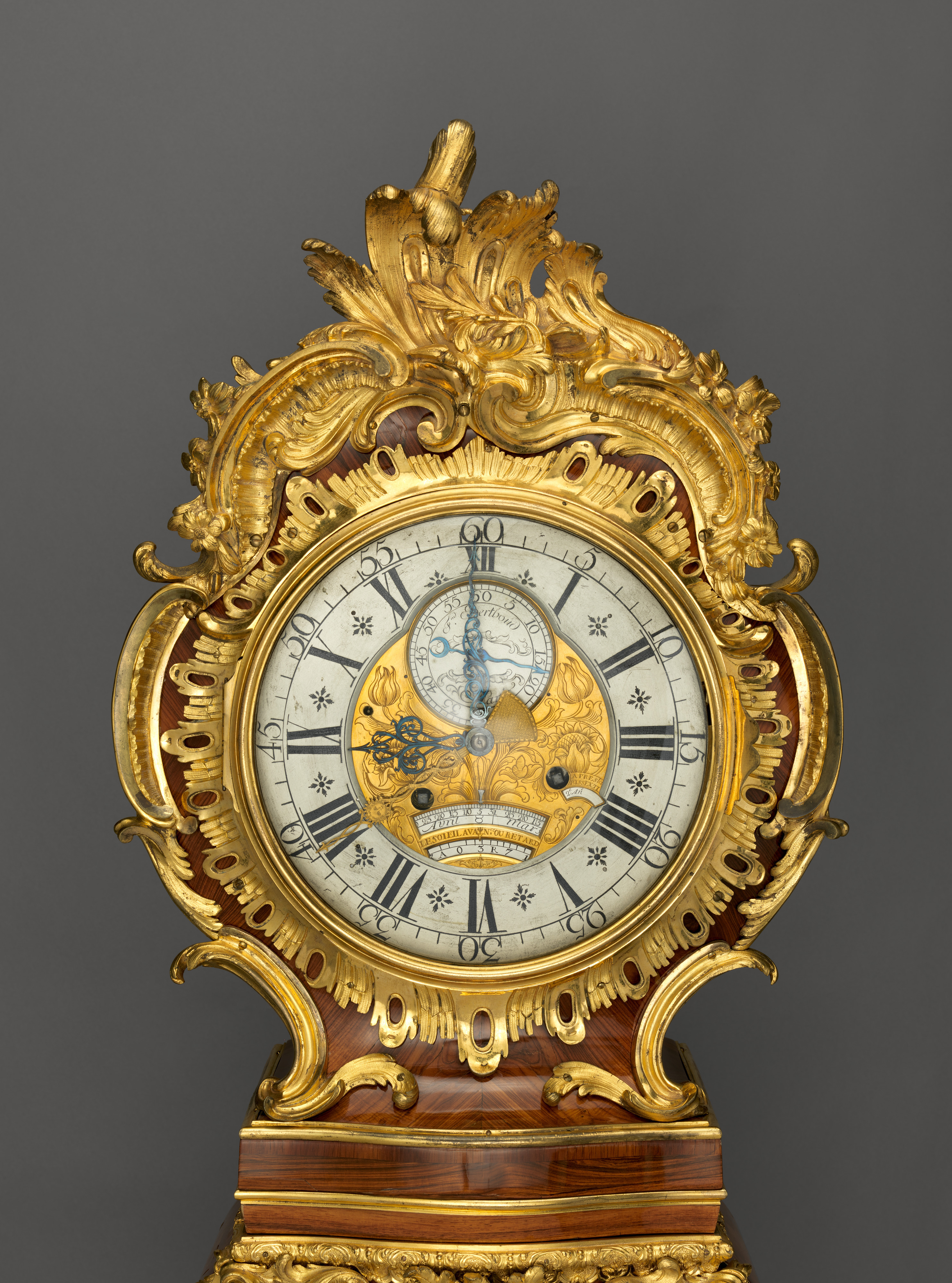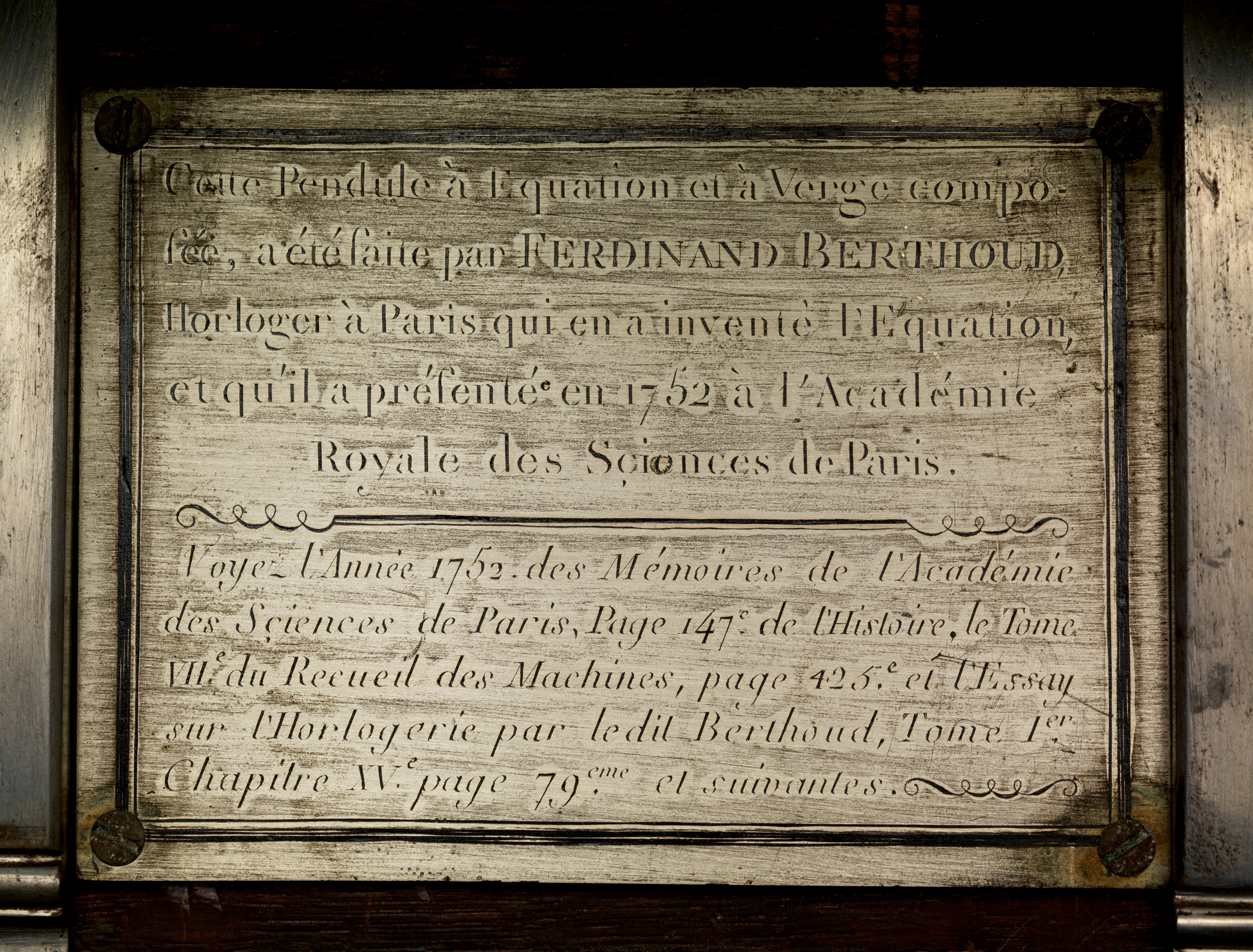Longcase equation regulator
Clockmaker: Ferdinand Berthoud French
Case maker: Balthazar Lieutaud French
French clocks with long pendulums and weights are called régulateurs (regulators). This clock, presented in April 1752 to the Royal Academy of Sciences in Paris, appears to be the first equation clock by Berthoud, who came to specialize in timekeepers showing both solar time, which varies slightly according to the season, and mean solar time, which is stable throughout the year. The trunk of Lieutaud’s case swells just above the base, enclosing a shaped opening to show the pendulum. The curved outline of the case is not only in keeping with the rococo style popular in the mid-eighteenth century but also highlights Berthoud’s cutting-edge technology of the time.
Due to rights restrictions, this image cannot be enlarged, viewed at full screen, or downloaded.
This artwork is meant to be viewed from right to left. Scroll left to view more.







